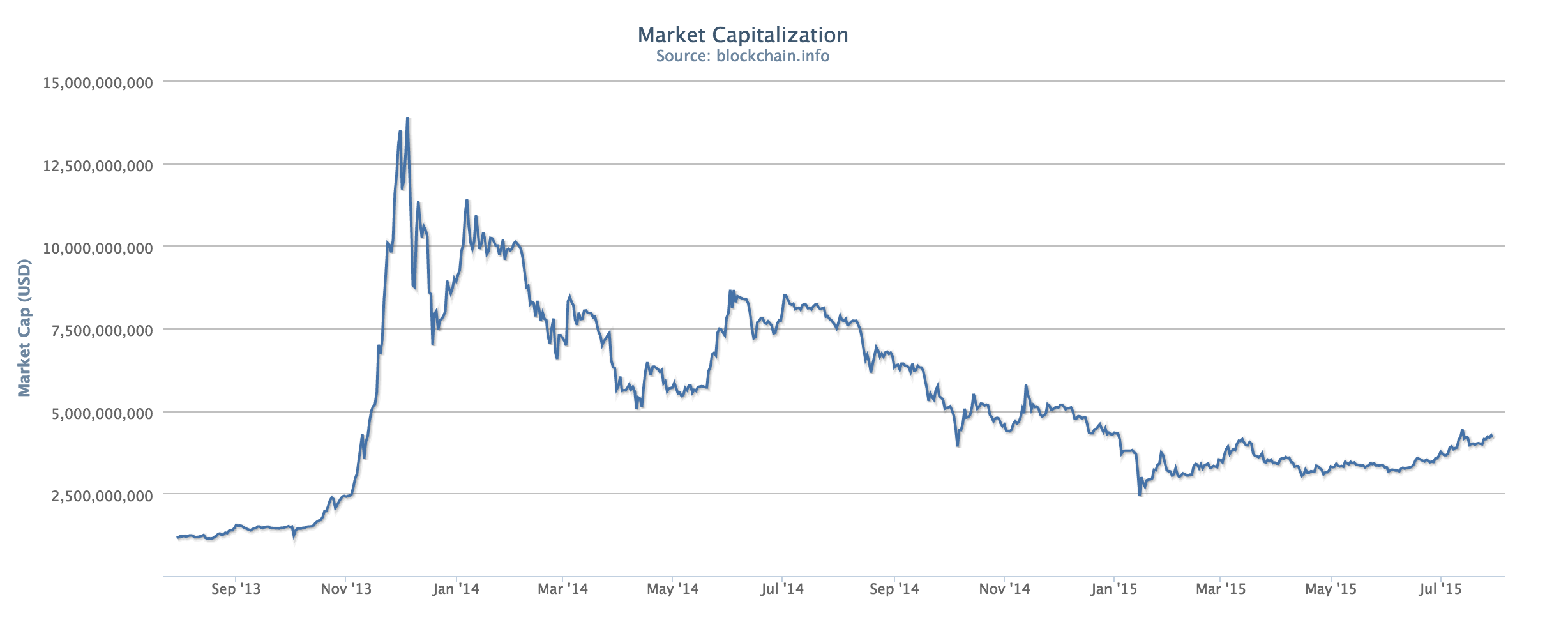From its early days as little more than a proof-of-concept, Bitcoin has grown to become a respected and powerful alternative currency model, which has been replicated and extended to create the plethora of Cryptocurrencies now on the market. Recently, huge amounts of investment money have been pouring into Bitcoin and Blockchain focused start-ups, with some speculating that this interest is much like that of the early days of the internet.
Birth of a Decentralised, Digital Currency
At the end of 2008, Satoshi Nakamoto released a paper which outlined ‘Bitcoin’ as a conceptual, cryptographically enabled digital currency. The software implementation of the currency began running from early 2009 with the creation of the ‘Genesis Block’ and the generation of the first-ever Bitcoin. The first year of Bitcoin was decidedly uneventful and it wasn’t until the establishment of early exchange services such as ‘Bitcoin Market’ and ‘Mt.Gox’ that the vital infrastructure for a Bitcoin economy began to fall in place. By the end of 2010 the Bitcoin market cap had exceeded $1 million USD.
Losses, Exploits and the Need for Solid Security Practices
After the development of an early Bitcoin market infrastructure, the industry was devastated by thefts and accidental losses, as owing to the growing value of the cryptocurrency and lack of solid security practices, Bitcoin wallets became a valuable target for malicious hackers. Notable losses include the early Mt.Gox incident of June 2011 where it was estimated that up to 2,500 bitcoins were stolen, as well as the loss reported by BitcoinTalk user ‘allinvain’ who had 25,000 bitcoins stolen, which would be worth an estimated £4.6million at current rates. These incidents were vital in teaching Bitcoin users and the emerging industry the importance of solid security practices to prevent such losses, which can have devastating consequences. Losses were not solely a result of theft; a lack of rigour in the backing-up of wallet data has ended in multiple companies and individuals losing bitcoins as a result of losing their wallet in technology malfunctions. The most high profile early Bitcoin exchange Mt.Gox was plagued with issues, which despite it growing to handle 70% of the world’s Bitcoin trades, ultimately resulted in the company losing around 850,000 bitcoins (roughly $450 million USD at the time) and having to go through long-winded bankruptcy proceedings.
Dark Net Concerns, Rapid Growth and Subsequent Crash(es)

Source: blockchain.info
Towards the end of 2013, the Bitcoin market capitalization began to grow significantly and the transaction volume of the network exceeded that of Western Union. This was despite the FBI shutdown of the notorious Silk Road dark net marketplaces which resulted in a temporary drop of prices and the subsequent shutdown/theft of Sheep Marketplace resulting in an estimated 40,000 to 90,000 bitcoins being stolen from users on the site. Some speculated that this was an ‘exit scam’ run by the site’s administrators who decided to take the money and close the site rather than continuing the high-risk activity of running an illegal online marketplace.
In late 2013 the Bitcoin market capitalization hit a peak of around $14 billion USD, at a time when 1 bitcoin was worth over $1,100. This was followed by a subsequent crash which saw the market value almost half, with some speculating that this was as a direct result of BTC-China ceasing to accept yuan deposits. As much of the rapid growth seen prior to the crash was linked to a massive surge in uptake from Chinese citizens, the announcement by the largest exchange serving the country that it would no longer accept deposits due to issues with a third-party provider had a devastating impact on the price of the cryptocurrency.
Maturing Cryptocurrency Industry
The industry has developed and matured a great deal over the last two years, despite less attention from mainstream media. The industry is now seen as a sector with phenomenal potential for growth and innovation, with possible applications of blockchain technology being investigated all over. Many venture capitalists have found themselves enamored by the possibilities for start-ups operating in the Bitcoin space, with huge amounts of investment money finding its way to a whole host of companies. This can only be good for the wider Bitcoin community, as the speculative, commodity style investment which had been the overwhelming method of investment into the digital currency is actually damaging to the overall network, due to the low liquidity and actual spending of bitcoins. A comprehensive list of known investments in Bitcoin-based enterprise can be found here; the amount of money being collected by prominent start-ups is very impressive and will very likely be used to assist in encouraging innovation and wider adoption of Bitcoin.















